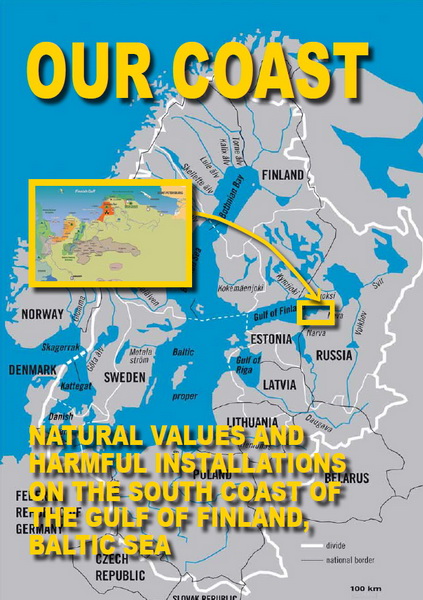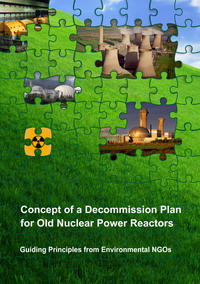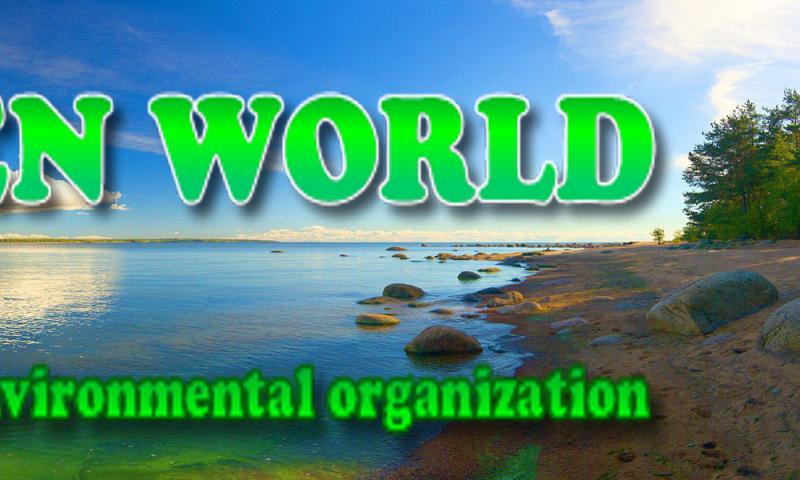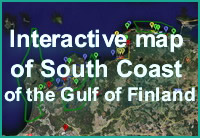
 |
The South Coast of the Gulf of Finland |
|---|---|
| Natural Values and Harmful Installations |
 |
Concept of a decommission plan for old nuclear power reactors |
|---|---|
| Guiding Principles from Environmental NGOs |
Russia decided without an environmental impact Assessment to continue operation of the old nuclear reactor of the leningrad NPP
Baltic Newsletter # 106
On 9 December 2009 Rosenergoatom (Russian NPPs operator) gave notice of the granting by Rostekhnadzor (Russian NPPs regulator) of the license for the third energy bloc, thereby extending the life of the Leningrad NPP until 31 January 2025. This is 15 years longer than the designers of these reactors planned.
The decision was taken behind closed doors, without public hearings, without an analysis of the possible alternative solutions of the energy problem. An environmental impact assessment, required by law, was not conducted.
The taking of this decision did not take into account:
- The absence of technological solutions for the spent nuclear fuel of the RBMK-1000 reactors. After 36 years of work of the Leningrad NPP, no economically and environmentally acceptable technology for the processing or long-term storage (for hundreds and thousands of years) of the spent nuclear fuel has emerged.
- The energy redundancy of the region. Energy is transferred to other regions of Russia and to Finland in an amount equivalent to that generated by the two energy blocs of the Leningrad NPP. The export of nuclear-generated electricity is equivalent to the import of spent nuclear fuel, a problem which is not yet solved.
- The potential of energy conservation in Northwest Russia (40%) is equal to the production of the 4 energy blocs of the Leningrad NPP. Thus the environmentally dangerous old energy bloc could, without damage for the economy and for the good of the environment, be halted and its decommissioning begun;
- Modernization of old thermal power plants, functioning in the region and their transformation into a CCGT (combine cycle gas turbine) could raise, without an increase in gas usage, their energy production by 1.7 times.
- A mechanism of environmental monitoring, independent of Rosatom and transparent to the public, is absent within the area of the site of the Leningrad NPP, while at the same time:
- Genetic disturbances have been observed in the local pine trees. In Sosnovy Bor and in the vicinity of the Leningrad LPP, disturbances in the seeds of the trees are 2-3 times greater than at a distance of 30 km in the direction of St. Petersburg;
- Tens of millions of fish per year die in the water collectors of the operating Leningrad NPP, which functions without protection equipment for the fish; in the past 36 years, billions of fish of the Baltic Sea have died at the water collectors of the Leningrad NPP;
- Catches of fishermen on the Southern Shore of the Gulf of Finland (village of Vistino) has decreased by 4 times in the last several years; the existence of a fishing industry has practically ceased to exist (the canning plants in Sosnovy Bor and Vistino are now closed);
- In Sosnovy Bor the number of cancerous sicknesses has increased by two times in the last 15 years;
- Water pollution of the Baltic Sea exists due to a powerfully warm outlet from the Leningrad NPP, and as a consequence, accelerated anthropogenic eutrophication of the marine ecosystems.
- Beginning in 2013, the risk of an accident at the Leningrad NPP in Sosnovy Bor will grow, in conjunction with the launching of the first (2013), and then second (2015), energy blocs of new Leningrad NPP-2. From that time the dangers will be the greatest, and it will be the most dangerous period from the point of view of the reactors that will just be beginning to operate, and those which will be reaching the end of their life cycle. At that moment in Sosnovy Bor, which is 80 km from the center of St. Petersburg, six energy blocs of the Leningrad NPP will be operating with an overall power of 6300 MW, not including the four military reactors for the nuclear submarines being tested in the Scientific Institute named for A.P. Aleksandrov. This is the largest concentration of nuclear sites on the Baltic Sea.
- An accumulation of financial resources and preparatory events, like those in Lithuania, in order to prepare for the decommissioning of the oldest energy blocs of the Leningrad NPP.
Thus, the non-transparent, and environmentally unjustifiable political decision for extending the life cycle of the third energy bloc of Leningrad NPP, is diametrically opposed to the solution of decommissioning of the reactor of an analogous type, the Ignalina NPP, and does not meet the long-term interests of Russia.
On 31 December 2009, with the halting of the Ignalina NPP, only Russia will continue to operate RBMK-1000 energy blocs, which are considered to be unacceptably dangerous in the rest of the world. Eleven similar energy blocs on the Leningrad, Kursk, and Smolensk NPP will continue their work.
Russia needs a new energy policy, based on energy efficiency, renewable energy sources, and the priority of environmental safety. It is essential to decommission the Leningrad NPP.
The decision about the lifetime extension of Leningrad NPP will increase the risks for environment and people not only for the Russia, but also for the residents of the Baltic Region.
Public Participation Endeavors in Development of the Decommissioning Plan for Russia’s NPPs
Closure of the Ignalina Nuclear power plant on 31 december 2009 will not lead to energy and social Shocks in lithuania
The extension of the life cycle of the third energy bloc of the leningrad nuclear power plant until 31 december 2025 without an environmental impact Assessment
On 31 December 2009 at 23.00 Victor Shevaldin, Director of the Ignalina Nuclear Power Plant (INPP) will give the command to turn off the second and last energy bloc with reactor type RBMK-1500 with a power of 1500 MW. In this way, a NPP with the two largest-in-the-world energy blocs of Chernobyl-type will forever stop generating electricity.
The process of decommissioning of the Ignalina NPP will continue, as it is not possible to bring the safety of these reactors to modern European standards.
The Republic of Lithuania, which until 2005 had the highest percent of nuclear energy (80%) among nations, will become a country that completely has stopped the production of nuclear-generated electricity.
The closing of the Ignalina NPP will no lead to energy and social shocks either in Lithuania, nor in the nuclear power plant-city Visaginas (30 thousand residents).
This has become possible thanks to the multi-year program of preparation of decommissioning of the Ignalina NPP, and also the rebuilding of the social infrastructure of the neighboring town. The town of Visaginas is practically a part of the NPP, and the largest employer and source of finances for the town budget.
SUCH A SCENARIO HAS BECOME POSSIBLE DUE TO THE FOLLOWING MEASURES:
- The drawing up of an energy scenario of development of Lithuania without the Ignalina NPP, with the introduction of a “cold reserve” of natural gas power plant, of the development of energy conservation (potential of 40%), and also of the development of renewable energy sources. The potential of wind energy 1200 MW on land and 1000 MW at sea, of solid biomass 36 petajoule (1 petaJoule = 1015 Joules), biogas 1.5 petaJoules, and energy forest 40 petaJoules;
- The acceptance of a plan for the decommissioning of the Ignalina NPP without waiting several decades. The construction of a “dry” temporary storage site for the spent nuclear fuel. As a result the majority of the personnel of the Ignalina NPP will be used in the work for the decommissioning of the Ignalina NPP to a condition of “brown field”;
- A wide involvement of the public (tens of non-government organizations) in the working out of the strategy of development of the town of Visaginas;
- The creation of a publicly transparent national fund for the decommissioning of the Ignalina NPP. The cost of decommissioning of the Ignalina NPP (2 × RMBK-1500) will cost approximately € 2.5 billion and will take 25 years (from 2005 to 2030). Future generations of Lithuanian citizens will solve the problem of nuclear waste.
- Restructuring of the Ignalina NPP and its transformation into several independently operating companies, cooperating among themselves in market conditions;
- The transfer of the management of the social infrastructure of the town from the NPP to local government;
- The acceptance (first in the world) of a Law on Social Guarantees for the workers of the Ignalina NPP, as it undergoes decommissioning;
- Opening in Visaginas of a business incubator for the development of small and medium business, creating new jobs;
- The organizing of a University for Adult Education, for additional education and the preservation of the socially active status of the veterans of the INPP;
- The allowance of the workers of the Ignalina NPP, who are Russian Federation citizens, the right to choose the local government of the Lithuanian city of Visaginas.
oleg bodrov, Nathaniel Trumbull
tel. +7 921 74 52 631
The distribution of our information is encouraged.
When reprinting please refer to our periodical.


